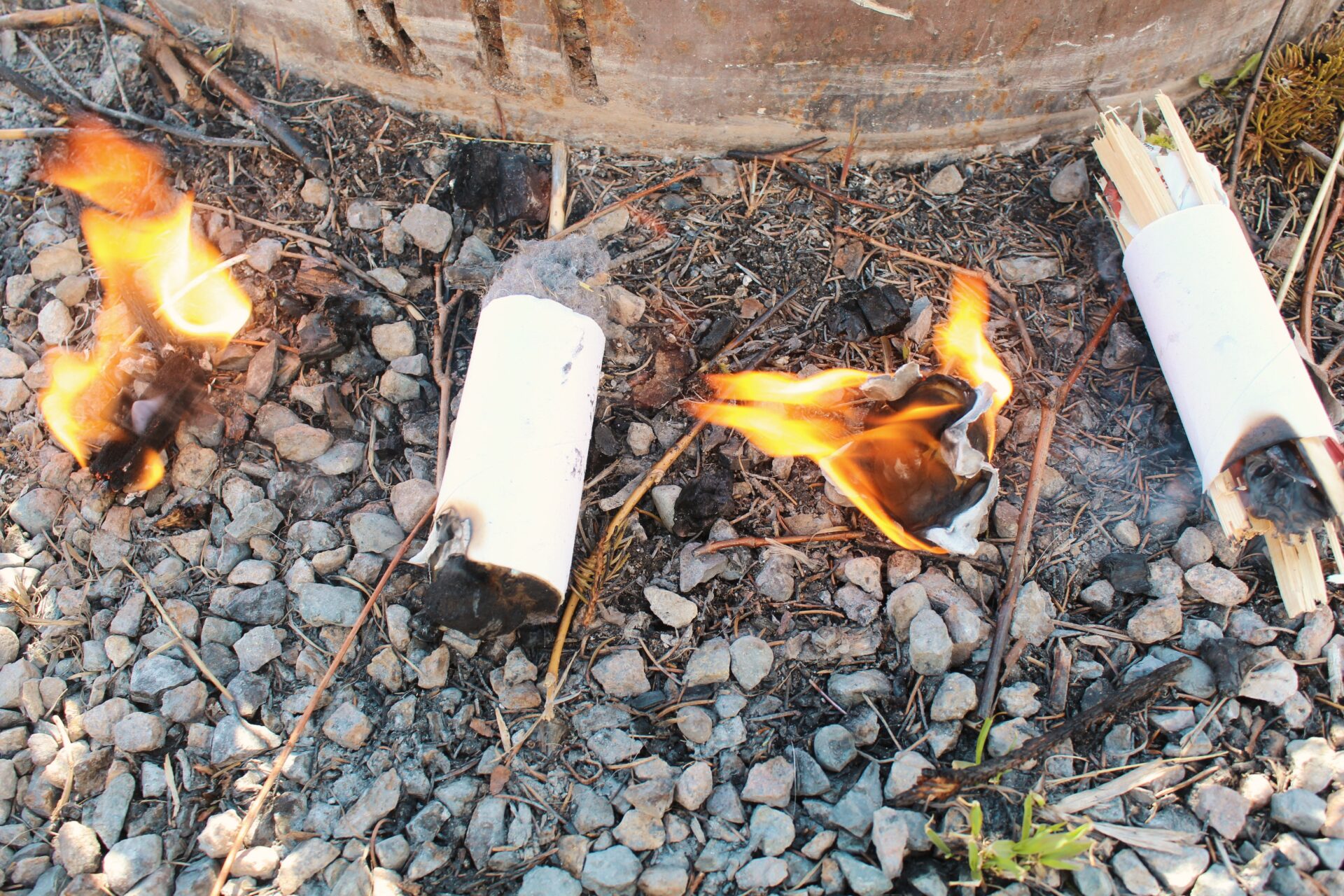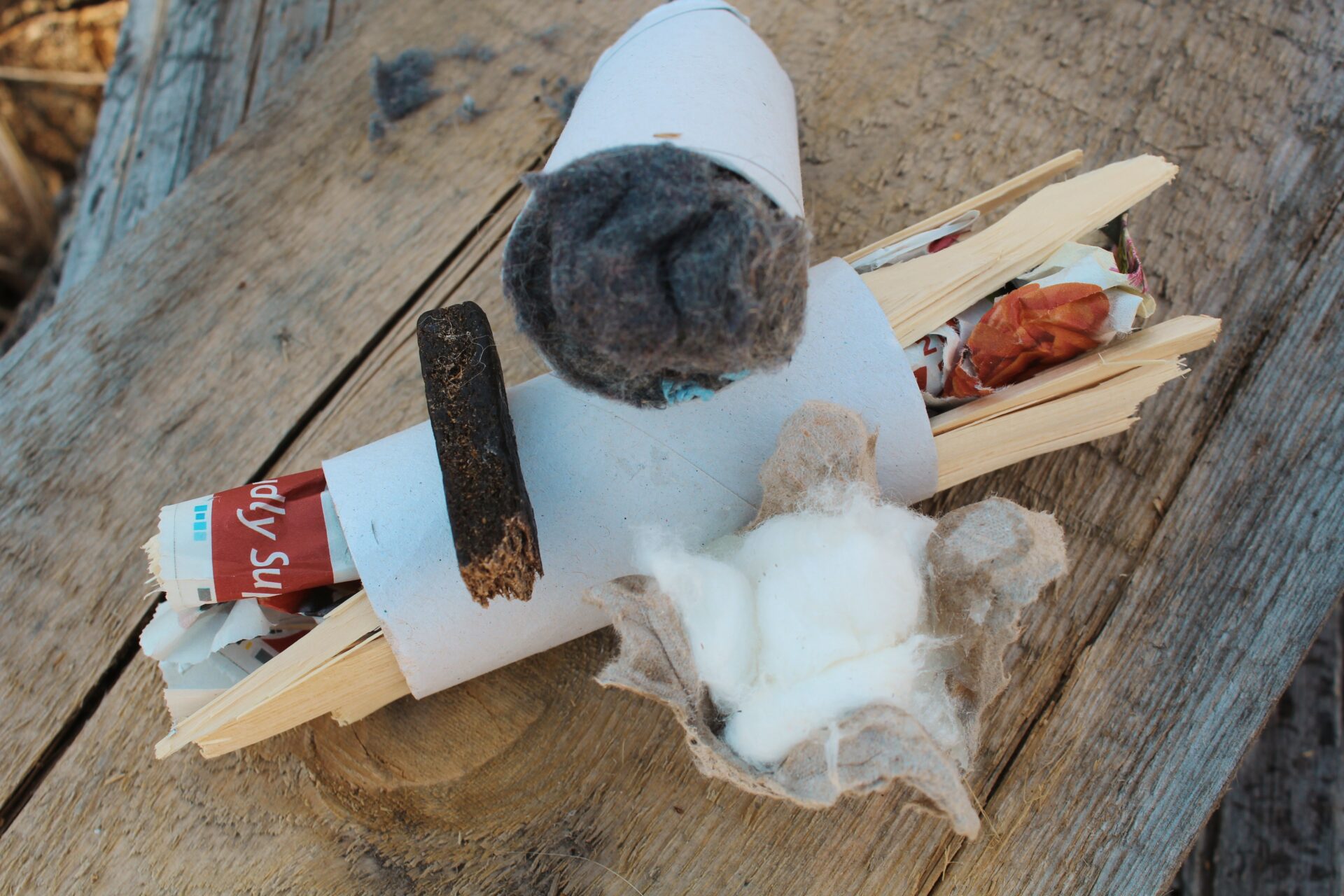There is no shortage of DIY fire starter ideas on the Internet, but how well do they work? While this is a rather incomplete experiment because each fire starter was only tested once, it was interesting to see how each one reacted while burning.
Advertisement

On a warm afternoon, with a light breeze, I put three of the most commonly seen DIY fire starters to the test: a tinder roll (toilet paper roll, newspaper and kindling), lint in a toilet paper roll and petroleum jelly cotton balls. As a control, I used half of a Firestarter stick. From there, times were recorded for burn length, ease of use and any other little nuances that stood out.
Difficulty To Make
While none of the three DIY fire starters are difficult to make, the tinder roll does take the most steps. Finely chopping small pieces of dry kindling is crucial to allowing the wood to catch on fire immediately; although, if you don’t have access to kindling, collecting some very dry sticks beforehand would also work. Once you have the kindling, simply tuck it into a toilet paper roll after placing a crinkled page of a newspaper into it.
Advertisement

Next up is the cotton balls with petroleum jelly. It’s a bit messy, but use your fingers or a popsicle stick to smear petroleum jelly onto the cotton balls. Pack into a pulp egg carton and store in a Ziploc bag.
Looking for the easiest DIY fire starter? It must be lint in a toilet paper roll, which is pretty self-explanatory!
Advertisement
Ease Of Use
Despite being the easiest to make, the lint roll was the hardest to light and keep going. The tinder roll flashed up like a charm, and the petroleum jelly cotton balls were hands down the easiest to get going – lighting up faster than the control!
Burn Time
For reference, the control fire starter burnt strong and steady for seven minutes. The tinder roll held a steady flame as well for around seven-and-a-half minutes, and the petroleum jelly cotton balls held a strong flame for around eight minutes! The lint roll smouldered and smoked for around 13 minutes before I finally held the lighter to it for a longer period to get a solid flame going – once lit, it only lasted for five minutes.
The Verdict
If I had to choose, which one of these DIY fire starters would I pack with me while outdoors? I would have to pick the petroleum jelly cotton balls – while they are a little messy to make, it seems like their ease of use and burn time would hold up well even in inclement weather conditions.
Note: As we approach fire season in BC, please exercise caution when lighting fires. BC Wildfire Service has an excellent website to keep an eye on the current fire danger rating, bans, restrictions and wildfire prevention.